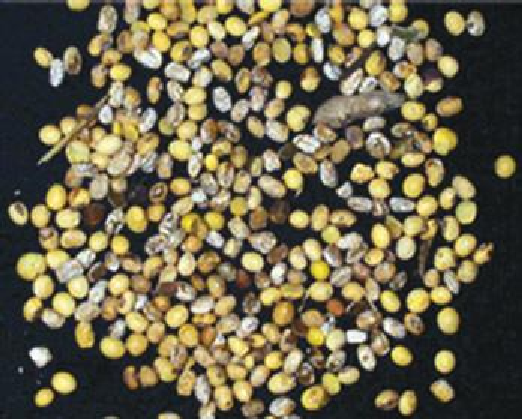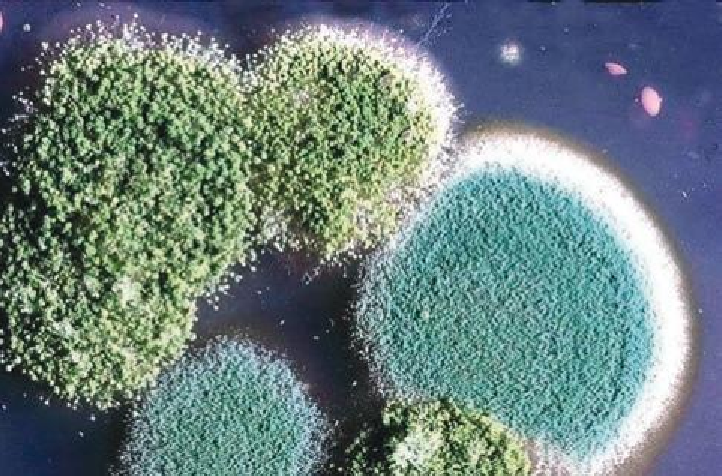Agriculture Reference
In-Depth Information
An advantage of this method is that it takes very little time and is inexpensive if light and/or electron
microscopes are already available. Limitations are that sensitivity is poor if the pathogen is also within
seed tissues or spores are dificult to release from the seed coat. Identiication is usually based on the single
structures, such as fungal spores that may require considerable expertise to make accurate identiication.
The test also is suitable for only a few types of pathogens, such as smuts or rusts.
Figure 10.6. A test for seedborne fungi of soybean. The predominant pathogen present is
Phomopsis lon-
gicolla
, indicated by the white, furry growth on non-germinated seeds (courtesy of Virginia Agriculture
Experiment Station).
Figure 10.7. A culture plate test on malt-salt agar for storage fungi (
Aspergillus
and
Penicillium
spp.) infec-
tion of grass seeds (photo from George L. Barron, University of Guelph).


